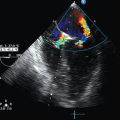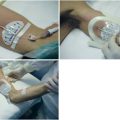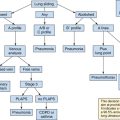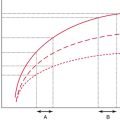Training in critical care echocardiography: Both sides of the atlantic
The North American Challenge
Roughly 6000 intensivists (at the attending level) in the United States need training in CCE. These frontline clinicians work on a full-time basis in the ICU and have the potential to use CCE as a primary bedside imaging modality. Some of these intensivists are faculty at fellowship programs and have the responsibility of training fellows in CCE. In the United States in 2011, 170 fellowship training programs under the specialty of internal medicine offered training in critical care medicine. These programs graduated 545 fellows with an additional 89 from anesthesiology-based critical care programs. CCE is an essential part of their training. For the individual fellow or attending intensivist, the question is how to become competent in CCE. At the system level, the challenge is how to provide training in CCE to many thousands of intensivists at both the fellow and attending levels.1–3
The European Challenge
Europe has 49 self-governing countries, 27 of which are member states of the European Union. The health care systems in each of these countries are different, as is the status of critical care itself, thus providing considerable challenges when considering the development of unified training programs. Accreditation in echocardiography at a European level is run by the European Association of Cardiovascular Imaging (formerly known as the European Association of Echocardiography) under the auspices of the European Society of Cardiology. Certification in intensive care medicine is provided at a national level. The European Society of Intensive Care Medicine, which aims to promote and coordinate activities, foster research and education, and provide recommendations for optimizing facilities in intensive care medicine, runs a diploma service in intensive care medicine but is not responsible for certification or accreditation. As in North America, for the individual intensivist in training the challenge is how to become competent in CCE. With the different systems that exist in Europe, the challenge of providing training has devolved to the individual nations. The role of regulatory bodies and relevant international societies is rather to provide guidance regarding the key skills and level of competence required in CCE for nations to be able to devise the most appropriate training program given the way that intensive care is structured in their own country.
International statements: Competence and training
The goal of training both for the individual and for the training system is competence; hence the latter must be explicitly defined. At an international level this was undertaken as a cooperative venture when a working group consisting of representatives from France and the United States coauthored a statement that defined competence in critical care ultrasonography.4 The document “American College of Chest Physicians/La Société de Réanimation de Langue Françoise Statement on Competence in Critical Care Ultrasonography” reviews the elements that define competence in CCE. At this point the statement on competence is commonly accepted as a guide that defines the goals of training for CCE.
The statement on competence clearly defines competence in CCE and is designed to be a “road map” for training. Following its writing, representatives from major critical care organizations from around the world met in Vienna in 2009 to develop guidelines for training in critical care ultrasonography. The resulting document titled “International Expert Statement on Training Standards for Critical Care Ultrasonography” represents the consensus of the working group. It addresses the question of how to become competent in both basic and advanced CCE.5
The statement on competence was detailed, whereas the statement on training was synoptic. As an example, the number of studies required for training was only a suggested target because the evidence was insufficient to make more definitive recommendations. Hence the goal was to establish a broad standard to permit flexibility in the design of training programs for a variety of medical cultures. The training statement did establish that basic-level CCE and general critical care ultrasound should be a required part of the training of every intensivist. Since publication of the training statement, Vignon et al reported on a program to train house staff in basic CCE.6 The results supported the recommendations of the statement on training. Regarding advanced CCE, Charron et al reported that competence in TEE requires approximately 30 studies under supervision, a number that is less than the 50 suggested in the training statement.7 Furthermore, these numbers are significantly lower than recommended by European certifying bodies in echocardiography (Table 61-1). In the United Kingdom, the British Society of Echocardiography has developed an accreditation process for CCE that requires the same standards (and number of studies) as for standard TTE accreditation.
TABLE 61-1
Recommended Numbers for Logbook Submission to Demonstrate Competence in Critical Care Echocardiography in Europe
| European Association of Cardiovascular Imaging (EACVI)* | 250 (150 if holding TEE accreditation) | 125 (or 75 if holding TTE accreditation) |
| British Society of Echocardiography (BSE)† | 250 (150 if holding TEE accreditation) | 125 (or 75 if holding TTE accreditation) |
TEE, Transesophageal echocardiography; TTE, transthoracic echocardiography.
*Jointly with the European Association of Cardiothoracic Anesthesiology.
†Jointly with the Association of Cardiothoracic Anesthesiology.
Training programs, certification, and accreditation
To avoid conflict of interest, a meaningful certification program should be designed by an agency that is completely independent of the training system. In the United States, the authorities responsible for developing the highest standard of certification are not likely to be interested in developing a high-level certification program for basic CCE given that it applies to a relatively small number of physicians. In the United Kingdom, a national program does exist for basic echocardiography as an entry level for all acute practitioners. This was a joint venture between the Resuscitation Council and the British Society of Echocardiography; it was not limited to CCE but linked to advanced life support. Basic CCE is only one skill of a larger skill set intrinsic to critical care medicine. Although it is perceived that certification in basic CCE is necessary, this implies a need for certification in other aspects of critical care medicine that are of higher risk and complexity, such as airway management and vascular access. It could be argued that basic CCE should be bundled into other important aspects of critical care practice that do not require individual certification. However, these discussions are possibly irrelevant since in the future, the inevitable adoption of basic universal ultrasound training as part of undergraduate medicine will make requirements for this basic level of echocardiography training for intensivists irrelevant (see Chapters 57, 60, and 62).
Across Europe and North America, accreditation (which has legal, financial, and interdisciplinary and intradisciplinary implications) is reserved for full echocardiography training—that is, the level at which one is able to practice independently and perform a fully comprehensive study. It is not competency based per se; however, each trainee completing the accreditation process has a mentor who supervised the training and certified that the trainee is of a sufficient standard (and has undertaken the logbook studies). In the United States, there is no means for intensivists to achieve high-level certification in advanced CCE because the National Board of Echocardiography (NBE) does not issue certification in echocardiography to noncardiologists. However, it allows any licensed physician to take the echocardiography boards, including intensivists. Many cardiologists have decided not to take the echocardiography boards, so they cannot receive certification in echocardiography by the NBE. Cardiologists who decide to not take the echocardiography boards may still demonstrate competence in echocardiography. This pathway is described in a statement by the major cardiology societies.8 Intensivists may also satisfy the competence requirements, and if they do, they are competent in echocardiography to an equal extent as cardiologists. One approach is for the intensivist to satisfy the requirements for competence and to pass the echocardiography boards. Passing this challenging examination demonstrates to cardiology colleagues that the intensivist has mastery of the subject. In Europe, clinicians who wish to practice echocardiography (irrespective of their underlying specialty) and cardiac physiologists are encouraged to achieve accreditation in echocardiography. Indeed, the initial British Society of Echocardiography TTE accreditation process was devised for echocardiographic physiologists and has only recently been adopted by cardiologists as a demonstration of the minimal level of competence needed to be an independent echocardiography practitioner. Moreover, accreditation is available for primary care practitioners, and in the United Kingdom a critical care accreditation process exists; however, it currently includes only TTE. TEE accreditation was largely developed in response to the recognition that the majority of TEE studies are currently undertaken by cardiovascular anesthesiologists. Thus, accreditation processes were developed in the United Kingdom and Europe in conjunction with the relevant cardiothoracic anesthesia societies.
Final thoughts
The european perspective
In Europe, because of the diverse health care systems (including both training and practice), development of standardized recommendations for training in CCE that suit all nations is probably not achievable nor indeed appropriate, and at the basic level, several different programs exist. In Denmark, a training program consisting of precourse e-learning, together with a 1-day hands-on training program, has been developed (FATE) through the Scandinavian USabcd group. Students are then encouraged to undertake a period of mentored study locally9; however, no certification or examination process exists to determine competence. In France, a 12-hour learning program (including lectures, clinical cases, and tutored hands-on sessions) has been developed and validated.6 In Germany and the United Kingdom, an 8-hour training program (including lectures and tutored hands-on sessions) has been developed and validated to additionally incorporate advanced life support compliance where required.10 Thus a range of programs exist, each individualized to the country in which they were developed, but all consisting of blended learning and tutored hands-on sessions and most requiring postcourse mentorship (all achievable within existing training programs). National recognition of these courses by regulatory and certifying bodies varies, with only the United Kingdom having programs approved by both the national echocardiography and intensive care societies. However, training in advanced CCE (including TTE and TEE) to achieve full accreditation status is realistically achievable only during a dedicated fellowship.
Conclusion
By contrast, basic CCE should be achievable by all intensivists, and although attending-level intensivists may find it difficult to obtain training in CCE in their own hospital, the professional societies offer courses to remedy this situation. It is hoped that in the future, basic ultrasound will be incorporated into the medical student curriculum. Thus current challenges in basic CCE training will not exist (see Chapter 60).
Pearls and highlights
• The nomenclature on basic and advanced echocardiography can be confusing; in general, advanced echocardiography is regarded as being equivalent to accreditation, and it must not be forgotten that accreditation is the level required to be an independent practitioner, not an international expert.
• There is consensus regarding the requirement for intensivists to be able to perform basic CCE, which can be achieved by blended learning during existing training programs.
• Advanced CCE requires a period in a dedicated fellowship/training program.
References
1. Vieillard-Baron, A, Slama, M, Cholley, B, et al, Echocardiography in the intensive care unit: from evolution to revolution. Intensive Care Me. 2008; 34:243–249.
2. Cholley, B, Vieillard-Baron, A, Mebazaa, A. Echocardiography in the ICU. Time for widespread use!. Intensive Care Med. 2006; 32:9–10.
3. Poelaert, J, Mayo, P. Education and evaluation of knowledge and skills in echocardiography. How should we organize? Intensive Care Med. 2007; 33:1684–1686.
4. Mayo, PH, Beaulieu, Y, Doelken, P, et al. American College of Chest Physicians/La Société de Réanimation de Langue Françoise statement on competence in critical care ultrasonography. Chest. 2009; 135:1050–1060.
5. Cholley, BP. International expert statement on training standards for critical care ultrasonography. Intensive Care Med. 2011; 37:1077–1083.
6. Vignon, P, Mücke, F, Bellec, F, et al, Basic critical care echocardiography: validation of a curriculum dedicated to noncardiologist residents,. Crit Care Me. 2011; 39:636–642.
7. Charron, C, Prat, G, Caille, V, et al. Validation of a skills assessment scoring system for transesophageal echocardiographic monitoring of hemodynamics. Intensive Care Med. 2007; 33:1712–1718.
8. ACC/AHA clinical competence statement on. echocardiography. J Am Coll Cardiol. 2003; 41:687–708.
9. Frederiksen, CA, Juhl-Olsen, P, Nielsen, DG, et al. Limited intervention improves technical skill in focus assessed transthoracic echocardiography among novice examiners. BMC Med Educ. 2012; 12:65.
10. Price, S, Ilper, H, Uddin, S, et al, Peri-resuscitation echocardiography: training the novice practitioner. Resuscitatio. 2010; 81:1534–1539.







